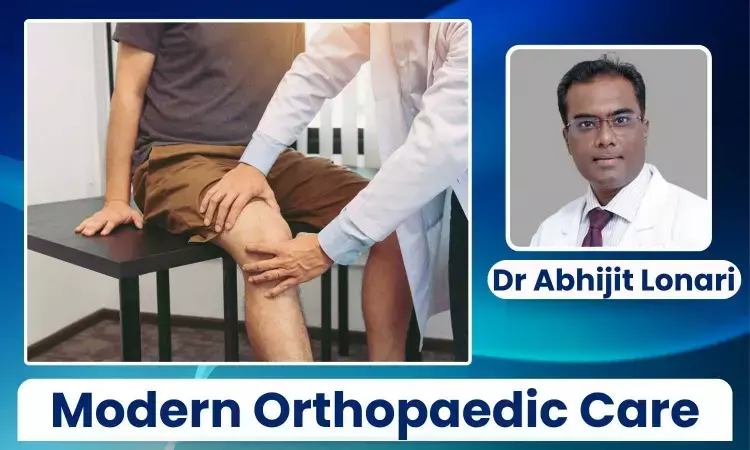- Home
- Medical news & Guidelines
- Anesthesiology
- Cardiology and CTVS
- Critical Care
- Dentistry
- Dermatology
- Diabetes and Endocrinology
- ENT
- Gastroenterology
- Medicine
- Nephrology
- Neurology
- Obstretics-Gynaecology
- Oncology
- Ophthalmology
- Orthopaedics
- Pediatrics-Neonatology
- Psychiatry
- Pulmonology
- Radiology
- Surgery
- Urology
- Laboratory Medicine
- Diet
- Nursing
- Paramedical
- Physiotherapy
- Health news
- Fact Check
- Bone Health Fact Check
- Brain Health Fact Check
- Cancer Related Fact Check
- Child Care Fact Check
- Dental and oral health fact check
- Diabetes and metabolic health fact check
- Diet and Nutrition Fact Check
- Eye and ENT Care Fact Check
- Fitness fact check
- Gut health fact check
- Heart health fact check
- Kidney health fact check
- Medical education fact check
- Men's health fact check
- Respiratory fact check
- Skin and hair care fact check
- Vaccine and Immunization fact check
- Women's health fact check
- AYUSH
- State News
- Andaman and Nicobar Islands
- Andhra Pradesh
- Arunachal Pradesh
- Assam
- Bihar
- Chandigarh
- Chattisgarh
- Dadra and Nagar Haveli
- Daman and Diu
- Delhi
- Goa
- Gujarat
- Haryana
- Himachal Pradesh
- Jammu & Kashmir
- Jharkhand
- Karnataka
- Kerala
- Ladakh
- Lakshadweep
- Madhya Pradesh
- Maharashtra
- Manipur
- Meghalaya
- Mizoram
- Nagaland
- Odisha
- Puducherry
- Punjab
- Rajasthan
- Sikkim
- Tamil Nadu
- Telangana
- Tripura
- Uttar Pradesh
- Uttrakhand
- West Bengal
- Medical Education
- Industry
Modern Orthopaedic Care: How Is Technology Improving Movement and Recovery? - Dr Abhijit Lonari

In recent years, orthopaedic care has undergone a quiet yet powerful revolution, transforming how bone, joint, and sports injuries are diagnosed, treated, and managed.
From advanced imaging techniques to robot-assisted surgeries, modern technology has turned what were once highly invasive procedures into more precise, minimally invasive, and highly effective treatments.
Whether it’s a young athlete recovering from a ligament tear or an elderly patient undergoing joint replacement, the shift is clear: outcomes are better, recovery is faster, and long-term functionality has vastly improved.
Precision Starts With Better Diagnosis
Gone are the days when orthopaedicians relied solely on X-rays or basic scans to understand complex bone and joint problems.
Today, with tools like 3D CT scans, MRI with cartilage mapping, and Scanograms, doctors can visualize bones, cartilage, and soft tissues in extraordinary detail. These technologies allow early detection of joint damage, cartilage wear, or bone deformities, often before they worsen.
Rise of Keyhole Surgery: Smaller Cuts, Bigger Gains
One of the most impactful advancements in orthopaedics has been the rise of arthroscopy, also known as keyhole surgery. Using a small camera and specialized tools inserted through tiny incisions, doctors can now perform entire procedures that previously required large cuts and longer recovery times.
We have almost completely moved away from open surgeries for soft tissue repair in the knee, shoulder, and ankle, and even wrist and elbow as well. Now, most ligament reconstructions, cartilage repairs, and even spine surgeries can be done through minimal incisions.
The result? Faster healing, less pain, and better outcomes, especially for young patients with sports injuries or active lifestyles.
Joint Replacements: More Accurate, Less Invasive
For those needing joint replacement surgery, technology has significantly raised the bar. Modern procedures now rely on robotics, navigation systems, and AI to place implants with sub-millimetre precision. Pre-surgical planning tools can even predict implant size and position, reducing guesswork during surgery.
Joint replacement surgery is all about precise alignment of the endoprosthesis and the perfect balance of soft tissues throughout the range of motion. Navigation, robotics, and AI have helped us a lot with better alignment of the implant and better soft tissue balance.
Furthermore, these advancements lead to less tissue damage, shorter surgery times, more durable implants, and ultimately, higher patient satisfaction with longer-lasting results.
Even implant materials have evolved. Options like ceramic, zirconium, and oxinium offer improved wear resistance, and gender-specific implants now cater to anatomical differences in knee replacement.
Meanwhile, titanium implants, which are MRI-compatible and more durable, are replacing traditional stainless steel.
Preserving Joints Before Replacing Them
One of the most promising shifts in orthopaedics is the growing emphasis on joint preservation. Rather than immediately opting for joint replacement, doctors are using tools like MRI cartilage mapping and Scanograms to detect early damage and intervene proactively.
Techniques such as PRP therapy, chondroplasty, and bony realignment surgeries help maintain natural joints for longer, especially in younger patients or early arthritis cases.
A Team Effort: Radiologists, Physiotherapists, and Technology Together
Modern orthopaedic care doesn’t stop at the operating room. A multidisciplinary approach involving radiologists and physiotherapists is now standard.
Accurate imaging before surgery and consistent rehabilitation after are just as critical as the surgery itself. For sports injuries and soft tissue surgeries in particular, physiotherapy plays a key role in restoring strength, flexibility, and full function.
From early detection and minimally invasive procedures to smart implants and personalized rehabilitation, modern technology has reshaped the way orthopaedic conditions are treated.
Whether you’re navigating a sports injury, considering joint preservation, or facing a joint replacement, today’s orthopaedic care offers more precision, faster recovery, and better long-term results than ever before.
Dr Abhijit Dinesh Lonari (MBBS, D.Ortho, DNB (Orthopedics), MNAMS) is a Senior consultant in Joint replacement and Orthopaedics at Aditya Birla Memorial Hospital (ABMH). He has over 24 years of experience in the field of Orthopaedics. His main area of expertise is Computer assisted joint replacement surgeries, revision and complex knee and hip replacement surgeries and arthroscopy surgeries.


